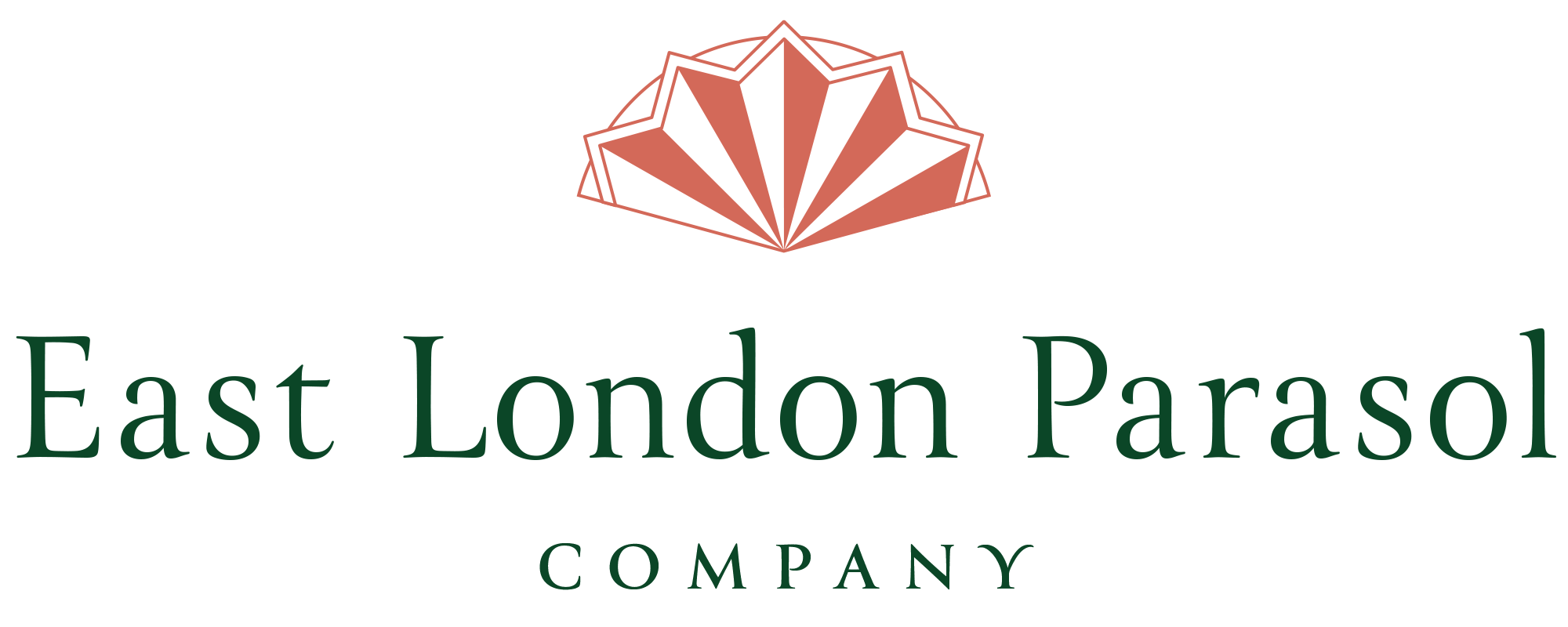5 inspirational English gardens
What is a parasol without a garden or a garden without a parasol? Our parasol visions and designs are intertwined with gardens- and it’s the time of year when all things green-fingered are celebrated at the RHS Chelsea Flower Show.
The 5 gardens in this list have inspired me in many ways, not only in colour combinations but also in courage to take risks in design and to do things differently.
The gardens of Gertrude Jekyll (1843-1932)
The renowned Edwardian horticulturalist was part of the Arts and Crafts movement and worked together with the architect Edward Lutyens on many houses and gardens. As a huge fan of the Arts and Crafts movement I love her designs for their embracing of no straight lines, and the colours and incredibly appealing scenes she created.
Jekyll was an incredibly talented woman who, in addition to designing plans and designs for around 300 gardens in Britain France and the USA, was also a musician, a composer, embroiderer, woodworker, metalworker, artist, garden writer and botanist.
Jekyll’s garden designs helped define the English garden as an art form with her appreciation of colour and structure. She is particularly famous for her huge herbaceous borders. She created planting plans for borders created by colour, starting with cool colours and moving to hotter ones and then back to cooler ones. Her book ‘Colour Schemes for the Flower Garden’ is about the role of colour in the making of gardens, which influences gardeners to this day.
Inspired by Gertrude Jekyll Garden? William parasol might be for you: William Round Bamboo

The Edwardian Formal Garden in Hestercombe, Somerset is considered to be one of Jekyll and Lutyens finest collaborations. It was created between 1904-1908, Lutyens used local stone to create steps, walls, paths, pools, a pergola and the formal garden. This stone was softened by Jekyll’s billowing planting of colourful flowers and foliage. The pergola is clad in clouds of roses and the gardens have double borders of pink peonies, red poppies, magenta foxgloves, royal blue delphiniums and blue/violet irises with architectural plants such as thistles and lavender. This cleverly planted garden is appealing all year round, although summer may pip the winning spot, and tickets can be purchased from the website.
The Gertrude Jekyll garden on Lindisfarne Island in Northumberland is one of her smallest and most remote gardens. Lutyens converted the castle into his holiday home and Jekyll turned the walled kitchen garden into a beautiful sea-side haven with eight varieties of sweet pea. This is now owned by the National Trust and open for visitors.
Sissinghurst Castle Garden, Kent: Tracy, Bette
These utterly beautiful gardens were created by Vita Sackville-West (poet, writer and key member of the Bloomsbury Group) and her husband Hardold Nicholson in the 1930s. They fell in love with the then dilapidated Tudor Sissinghurst Castle and worked together on to create what is now one of England’s most famous gardens.
The Grade 1 listed gardens took inspiration from the work of Gertrude Jekyll and combined Vita’s love of a cottage garden look with Harold’s more formal planting style. The gardens include an orchard which is half garden and half wilderness with fruit trees entwined with creeping roses. The rose garden with its ‘tumble of roses and honeysuckle, figs and vines’ which has over 200 cultivars and is a romantic dream.
Parasol inspiration: Jane Round Bamboo

Vita loved playing with colour in her gardens and I can only admire this approach! The dreamy White Garden combines shrubs, roses, perennials and annuals in shades of grey, green and white. The Purple Border is a clever riot of pink, blue, lilac and purple flowers. The Lime Walk is carpeted with flowers in spring and the Nuttery of Elizabethan coppiced hazel trees has a changing tapestry of flowers beneath it.

Sissinghurst Castle Garden is now a National Trust property and holds regular events such as bird walks and art installations, as well as being advocates of ‘no dig’ food growing in their vegetable garden.
Charleston Garden, East Sussex
A beautiful walled farmhouse garden in the heart of the rolling Sussex countryside, created by Vanessa Bell (Virgina Woolf’s sister) and Duncan Grant in 1916 and redesigned by Roger Fry in 1918. Inspired by the Arts and Crafts movement, the gardens were a meeting place for pivotal members of the Bloomsbury set. They filled the flower beds with plants they loved to paint and it’s as colourful and inspiring today. The magical space was designed as a living painting filled with sculpture, which doubled as an auditorium for their children’s improvised plays and for sculpture exhibitions.
The gardens are not enormous but they’re rich in colour, scent, movement and are very lovely to walk around. Hollyhocks tower over you amongst cottage garden roses, apple trees, fig trees and summer flowering perennials. I find the hollyhock flowers endlessly inspiring as nature puts together the most unlikely colour combinations but never makes a mistake.
Parasol inspiration: Helena Round Bamboo

The garden is open three days a week and free to visit, and if you’d like to visit the house you need to book tickets. Charleston remains a hub of creativity and they run a year-round programme of festivals, talks and performances with leading writers, artists and changemakers.

Prospect Cottage Garden, Kent :
Created by artist Derek Jarman in the shingle surrounding his black tarred Victorian fisherman’s cottage near Dungeness Power Station, this garden is otherworldly and iconic. Jarman moved to Dungeness and Prospect Cottage in 1986 and lived there until his death in 1994. It remains a place that people visit to be inspired by his creativity and the bleak, quiet and special landscape surrounding it.

Jarman cultivated a garden from the shingle, nurturing poppies, sea kale, wild peas, viper’s bugloss, teasels and sea holly in the looming shadow of the nuclear power station. Jarman would use driftwood stocks to mark out the delicate purple shoots of the sea kale, and then adorn these sticks with flotsam gathered on his daily walk. His beach-combing finds adorn the garden with chains, bricks, crab shells, anchors and the plants spread among them. Jarman wrote that when he first started his garden the locals ‘thought I was building a garden for magical purposes’
Parasol inspiration: Augusta Round Bamboo

The colours and light of Dungeness feel saturated- the palette of slate grey sea, orange shingle and vegetation of silvery green brassicas leave you with a sense of being somewhere very different. The garden was saved for the nation in 2020 and you can book visits on the website
https://www.creativefolkestone.org.uk/prospect-cottage/
Kyoto Garden, London

The Kyoto Garden within Holland Park in Kensington is a traditional Japanese garden with tranquil tiered waterfalls and a serene pond full of koi carp. I love this garden as it transports you across the world without leaving London. There are stone lanterns and Japanese maple trees incongruously inhabited by the peacocks and squirrels of Holland Park, and the colours of the trees are vivid and luscious in autumn.
Parasol inspiration: Olivia Round Bamboo

It was a gift from the city of Kyoto to commemorate the long friendship between Japan and Great Britain and, despite it’s timeless feel and appearance, it was opened as recently as 1991. My dream day in London would involve the Kyoto Garden and a visit to nearby Leighton House to soak up the turquoise decor of the Arab Hall.
https://www.rbkc.gov.uk/museums/leighton-house





